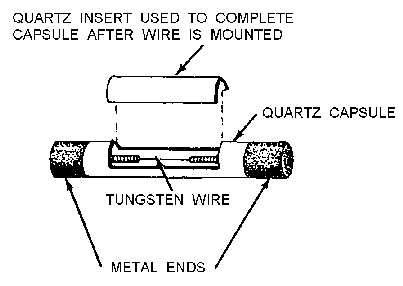2-5
To measure the output of microwave radio or radar transmitters, you can use test instruments that
convert rf power to another form of energy, such as light or heat. These instruments can be used to
indirectly measure the power. A method used to measure the effect of a resistor load on a stream of
passing air can also be used to indirectly measure power. Accurate measurement of large-magnitude
power also can be achieved by measuring the temperature change of a water load. The most common type
of power meter for use in this frequency range employs a BOLOMETER.
Bolometer
The bolometer is a loading device that undergoes changes of resistance as changes in dissipated
power occur. The two types of bolometers are the BARRETTER and the THERMISTOR. The barretter is
characterized by an increase in resistance as the dissipated power rises. The thermistor decreases in
resistance as the power increases. In either case, resistance is measured before and after the application of
rf power. If the same change in resistance is then produced by a variable dc source of power, then the rf
power is equal to the measured dc power. This relationship makes possible the direct calibration of a
bridge circuit in units of power. In other words, one condition of balance exists when no rf power is
applied; but in the presence of power, a second condition of balance exists because of the resistance
changes of the bolometer. It is this change of resistance that is calibrated in power.
Q-5. What are the two types of bolometers?
BARRETTER.—The construction of a typical barretter is shown in figure 2-2. The fine wire
(usually tungsten) is extremely small in diameter. This thin diameter allows the rf current to penetrate to
the center of the wire. The wire is supported in an insulating capsule between two metallic ends, which
act as connectors. Because of these physical characteristics, the barretter resembles a cartridge-type fuse.
The enclosure is a quartz capsule made in two parts. One part is an insert cemented in place after the
tungsten wire has been mounted. In operation, the barretter is matched to the rf line after power is applied.
Figure 2-2.—Typical barretter.
THERMISTOR.—A high degree of precision is made possible by the thermistor; therefore, it is
widely used. Figure 2-3 shows the typical construction of a bead-type thermistor. The negative-
temperature coefficient comes from the use of a semiconductor as the active material. Notice that the


